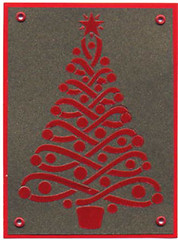The airport decided it would be easier to remove the trees that some identify as a Christian symbol than fight a lawsuit or build the menorah. It will be the first time the airport will abandon its 25-year tradition of placing a tree at each of the 15 airport entrances.
The Seattle story is the polar opposite of another in Michigan, where a bipartisan capitol committee recently voted unanimously to rename the capitol's 61-foot blue spruce a “Christmas tree” as opposed to calling it a "holiday tree." The same committee rejected the state house's urging to create a joint display — a Christmas tree and a Hanukkah menorah — after a Jewish group said it's a religious symbol that would violate the separation of church and state. This Jewish group has no problem with the tree.
While not attempting to appear unsympathetic to the plight of the Seattle rabbi, there seems to be too much emphasis on the perceived power of symbols in the United States with little regard to the First Amendment or any understanding that symbols might mean different things to different people, including Christmas trees.
Depending on the source, the symbol of a Christmas tree is ripe with interpretation despite its close association with Christianity. One source places its origins 1,000 years ago when St. Boniface, who converted German people to Christianity, came across a group of pagans worshipping an oak tree. He cut down the oak tree, but to his amazement, a young fir tree sprung up from its roots. St. Boniface took this as a sign of the Christian faith.
Another source credits Martin Luther, who is said to have attached lighted candles to a small evergreen tree, trying to simulate the reflections of the starlit heavens as they appeared over Bethlehem on the first Christmas Eve. The Christmas tree star topper (or angels) are said to represent the Star of Bethlehem.
Others look further back to the Egyptians who celebrated winter solstice by bringing in green date palms, the Romans who raised an evergreen bough during the feast of Saturn, the early Scandinavians who paid homage to the fir tree, the Druids who considered the springs of an evergreen to be holy, and the Norsemen who felt they symbolized the revival of the sun god Balder. Take your pick.
Trees are not exclusive to one faith. In fact, the very idea of celebrating Christmas on December 25 was less than exclusive. It was originated by the Catholic Church to eclipse the festivities of rival pagan religions in the 4th century. (Jesus was believed to have been born in the spring.)
Anyway, what is more certain about Christmas trees is that they traveled across Europe to England after Queen Victoria visited relatives in Coburg, Germany, and fell in love with Prince Albert. After they were married and returned to England, Prince Albert decorated a tree with the finest of hand-blown glass ornaments. It was so admired by common citizens, they copied the tree and the couple's customs, partly, in recognition of their love. In France, it was introduced for a similar reason: Princess Hélène de Mecklembourg brought a tree to Paris after her marriage to the Duke of Orleans.
In the United States today, almost 80 percent of non–Christian citizens celebrate Christmas and 96 percent of the total population celebrates it (including some Jewish families), which raises some question of whether or not a Christmas tree is exclusive to Christianity (even the church has banned them on occasion).
Perhaps, like all symbols, the meaning remains in the eye of the beholder. For Christians, the Christmas tree means something. For non-Christians, it means something different.
But for all of us, the move to ban any holiday symbol in fear that other symbols might be excluded is wrought with ignorance and intolerance. It is also contrary to spirit of the First Amendment, which is meant to protect all voices. It is not meant to censor others out of fear that not everyone will be equally represented.
The bottom line, from a communication standpoint, is that symbols are funny things. They only have power when they are given power by the perception of people. For one rabbi, a Christmas tree represents the prevalent spirit of giving among many faiths in America. For another in Seattle, it seems to mean the exclusion of his faith in America. Ironically, for the latter, his apparent fear of exclusion gives the symbol much more power than the first, but with a twisted meaning.
Now that's something to think about in a country that has defined the Confederate flag as politically intolerant and the Mexican flag (over the United States flag) as a beacon of tolerance. Neither was meant to signify the meaning they have recently been assigned, except by those promoting their own fear and intolerance.
For me, at the end of the day, when I see a Christmas tree or a crucifix or a kinara or a menorah, all I see is the United States, a country that allows people to celebrate and share their holiday rituals openly, without fear of persecution. Let's try to keep it that way.

















3 comments:
Famous Last Words:
"In hindsight, we probably should have handled this in a more deliberate and thoughtful manner, but at the time we were given a very short timeline." — John Creighton.
Very good, I neglected to leave this earlier.
absurd thought -
God of the Universe hates
hearing MERRY HOLIDAYS
possibly the atheists have doubts
about their lack of faith...
.
Thanks Uspace. Appreciate it! Add to the ever increasing public pressure on individual people to hide their faith (as I noted on your blog) ... the ever increasing public pressure on individual people to hide their views too. Cheers!
Post a Comment